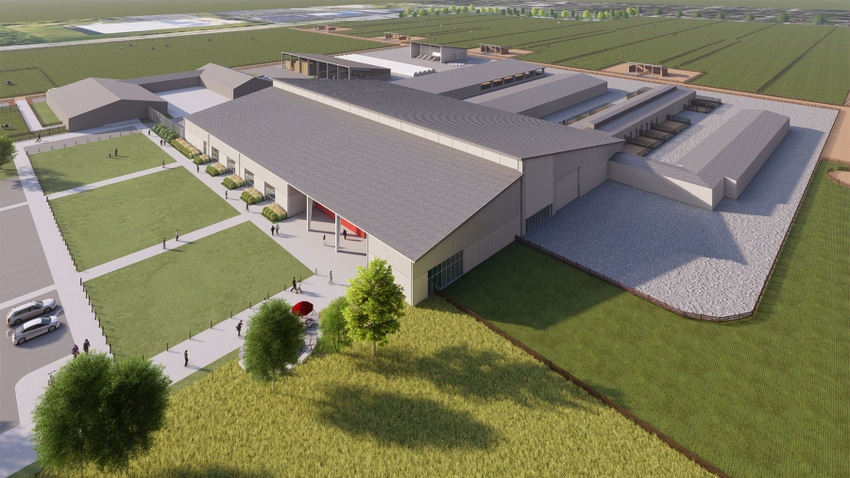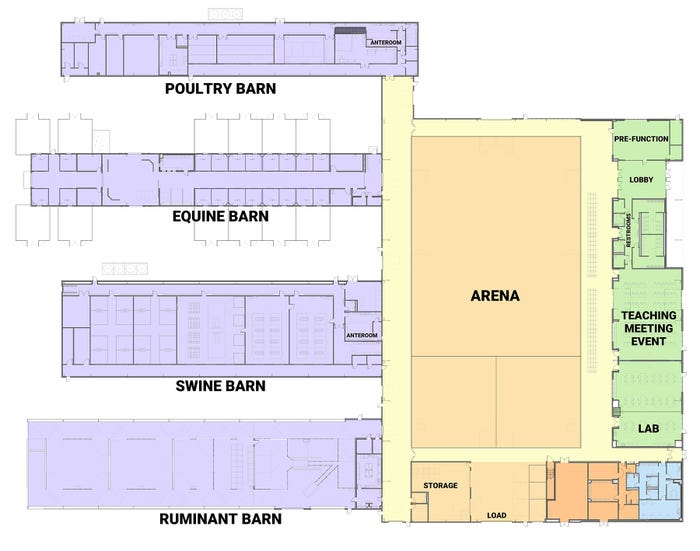
There’s no better learning than “hands-on,” and Ohio State University intends to provide even more direct interaction with students and the public as it moves forward with a new $52 million, state-of-the art complex.
Inside the facility, students will have opportunities to gain hands-on experience with swine, equine, poultry, cattle, sheep and goats. At its core, the Multispecies Animal Learning Center seeks to advance workforce development in animal agriculture.
The College of Food, Agricultural, and Environmental Sciences (CFAES) broke ground Jan. 30, and it will build the MALC at the Waterman Agricultural and Natural Resources Laboratory on the Columbus campus. Opening is expected in fall 2025.
OSU recognizes that agriculture requires a growing workforce, and MALC is part of the greater vision for Waterman to be a center of science education and workforce development, says Pasha Lyvers Peffer, chair of the OSU Department of Animal Sciences.
“Through engaging students early, we aim to create a pipeline for agricultural careers,” she says.

GROUNDBREAKING: Participating in the groundbreaking of the Multispecies Animal Learning Center in Columbus, Ohio, were Graham Cochran (from left), associate dean for operations; Matt Canterna, Wellogy principal architect; Lori Gillett, CK Construction CEO; Devin Fuhrman, Nationwide; Dennis Summers, ODA state veterinarian; Don Jones, state representative; Cathann Kress, CFAES dean; Ted Carter, Ohio State president; Elizabeth Harsh, Ohio State trustee; Pasha Lyvers Peffer, chair of animal sciences; Elizabeth Lott, animal sciences student; and Alvaro Garcia Guerra, animal sciences faculty. (Photo by Ken Chamberlain)
Facilitating education in essential STEM fields, the MALC is designed to foster workforce development in careers such as animal sciences, engineering, food science, human nutrition and health.
The MALC and associated pastures along Lane Avenue aim to bring together teaching and Extension activities.
As an expansion of the original MALC project, a new modern dairy will also be constructed at Waterman to replace the aging dairy facility. The facility is expected to be completed by winter 2025, and it will feature robotic milking technology and the latest in precision dairy technologies, feed systems and waste management.
“The combination of classroom, wet lab and animal space provides for dynamic and interactive learning,” Peffer says. “More time can be spent demonstrating versus discussing practices. The proximity of the facility reduces barriers to offering these experiences.”
It’s not only for students. OSU wants to engage the public in sharing the importance of food production and the science behind the how and why things are done in raising agricultural animals.
“There can be many negative perceptions that surround agriculture, but often these negative perceptions stem from a lack of knowledge or understanding of the practices used in the industries,” Peffer says. “Through the MALC, we can not only tell the story, but also show the story of how animals are raised.”
The center hopes to dramatically grow the more than 20,000 visits a year (pre-COVID-19) to Waterman during the next five years, educating the public about modern livestock production with tours, a viewing area into the animal barns and interactive, educational displays.

LAYOUT: Inside the facility, students will have opportunities to gain hands-on experience with swine, equine, poultry and ruminants. The public will have a chance to view the workings of modern livestock production. (Courtesy of OSU)
Cathann A. Kress, vice president for agricultural administration and dean of CFAES, calls it a game changer.
“It’s going to bring schoolchildren, in grades K through 12, here to learn about career pathways,” she says. “It’s going to engage people from all across our industry. And it's going to be a place where all of us can learn more about the work of the university and our industry.”
Additionally, it will provide space for youth development programs, such as 4-H and FFA, and their events.
CFAES is fundraising while moving forward with MALC construction. At present, $16.4 million has been secured, including a $10 million investment allocated in the state budget and a $4 million commitment from Nationwide received in November.
Read more about:
EducationAbout the Author(s)
You May Also Like






